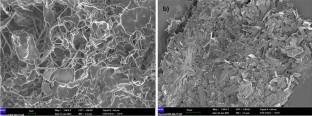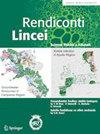基于Fenton-like反应的黄瓜叶提取物organic@inorganic杂交纳米花的催化抑菌活性研究
IF 2.7
4区 综合性期刊
Q2 MULTIDISCIPLINARY SCIENCES
引用次数: 0
摘要
对于organic@inorganic杂交纳米花(hNFS)的合成,本研究使用黄瓜叶提取物作为有机成分,而不是昂贵的生物分子,如DNA,酶和蛋白质。在不同pH(5、7.4和9)的PBS缓冲液中,使用不同体积的提取物合成hnf,但这些参数(浓度和pH)对hnf的形态特征有显著影响。通过FE-SEM、EDX和FT-IR分析,分别详细分析了在hNFs合成中起关键作用的形貌、元素组成和有机基团。具有理想花形态的hNFs(在pH 7.4下用1ml提取物合成)对金黄色葡萄球菌和大肠杆菌具有抗菌活性。Fenton机制解释了hnf对菌株的抗菌活性和对愈创木酚的过氧化物酶样活性。本文章由计算机程序翻译,如有差异,请以英文原文为准。

Catalytic and antimicrobial activities of cucumber leaf extract-based organic@inorganic hybrid nanoflowers through Fenton-like reaction
For the synthesis of organic@inorganic hybrid nanoflowers (hNFS), instead of expensive biomolecules such as DNA, enzyme, and protein, the Cucumis sativus (cucumber) leaf extract was used as an organic component in this study. In the PBS buffer with different pH (5, 7.4, and 9), hNFs were synthesized using extract with different volumes, but these parameters (concentration and pH) significantly affected the morphological characteristics of hNFs. Morphologies, elemental compositions, and organic groups that play key role in the synthesis of hNFs were detailed using FE-SEM, EDX, and FT-IR analyses, respectively. hNFs with ideal flower morphology (synthesized at pH 7.4 with 1 ml extract) showed antimicrobial activity against Staphylococcus aureus and Escherichia coli strains. Antimicrobial activity against strains and peroxidase-like activity against guaiacol of hNFs are explained by Fenton mechanisms.
求助全文
通过发布文献求助,成功后即可免费获取论文全文。
去求助
来源期刊

Rendiconti Lincei-Scienze Fisiche E Naturali
MULTIDISCIPLINARY SCIENCES-
CiteScore
4.10
自引率
10.00%
发文量
70
审稿时长
>12 weeks
期刊介绍:
Rendiconti is the interdisciplinary scientific journal of the Accademia dei Lincei, the Italian National Academy, situated in Rome, which publishes original articles in the fi elds of geosciences, envi ronmental sciences, and biological and biomedi cal sciences. Particular interest is accorded to papers dealing with modern trends in the natural sciences, with interdisciplinary relationships and with the roots and historical development of these disciplines.
 求助内容:
求助内容: 应助结果提醒方式:
应助结果提醒方式:


